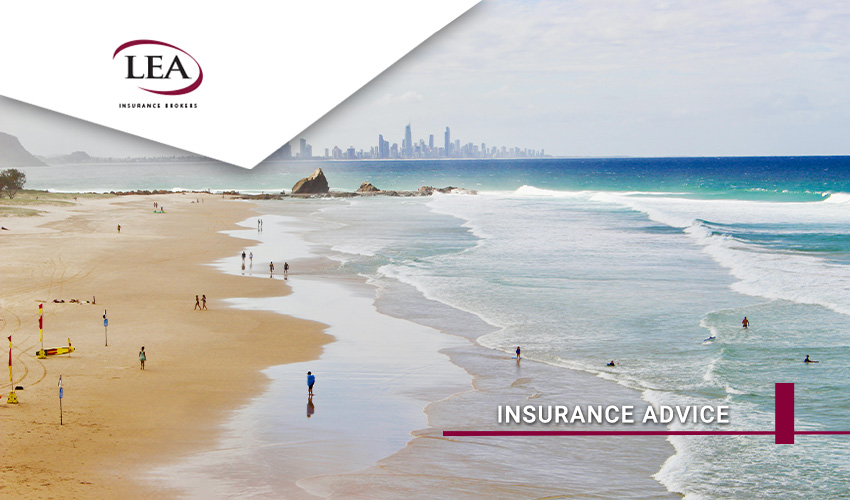
Prepare now for the biggest risks to tourism businesses
Visitor or workplace accidents, natural disasters, reputation incidents, and major health events are the most significant risks to your tourism business. Environmental, societal, political, technological factors, and an economic crisis, could also have an impact.
Then there’s the impact of the pandemic. This is all in a risk category of its own, with Austrade’s Tourism Research noting the beginnings of a domestic-led tourism recovery even despite the current lockdowns. However, almost six in 10 Australians surveyed earlier this year said they weren’t willing to travel in the next six months – the reason was the risk of border closures, says professional services firm Deloitte.
So, how can your business keep on the front foot in the face of all of these big risks?
Reducing visitor or workplace accidents
Tourism operators know possible risks include:
- Natural disasters (storms, flood, bushfire and drought)
- Major health events (pandemics, epidemics, outbreaks and food poisoning)
- Emergency (visitor of workplace accidents, loss of power, infrastructure or transport disaster, terrorism or major criminal incidents)
- Information technology threat (cyber-attack or IT failure)
- Reputation incident (negative media coverage, rumour-driven crises, organisational misdeeds and legal action)
From a national tourism strategy level, researchers have called for a need to integrate resilience, urban planning and disaster risk reduction. As a business operator, you have limited capacity to control or influence most of these issues. But how can you still work on preventing, preparing for as well as responding to and recovering from the next disaster?
Aim to update your emergency and disaster plans, using this government Tourism and Hospitality Disaster Checklist as a guide.
Protecting your brand
The years you spend building your tourism business brand could be damaged in hours due to social media, an event resulting in injury or damage, in addition to inappropriate employee behaviour. This adds grist to the rumour mill that is social media. Before brand damage happens, have a crisis communications plan in place. You may also reach out to your regional tourism body for advice. Explore tourism crisis communications case studies in this toolkit. It advises operators to be:
- Authentic
- Avoid hysteria
- Be upfront
- Only make promises you can keep
- Consider all stakeholders
- Be proactive (not reactive)
- Find an opportunity in the crisis
- Think about how you can engage in corporate social responsibility.
Consider having policies and procedures in place on responding to a reputation incident, how you’ll recover from it and how you’ll communicate it within your business and externally. Ensure staff are trained in these strategies and you have wellbeing, safety and support services to harness when needed. That website even suggests more coherent messaging scripts when legal action looms. ‘No comment’ won’t wash because the general public is more likely to assume guilt and cover up.
Major health events
You might be feeling this has got to be our last COVID-19 wave, but mutations continue to spawn. Consider looking at it as your business (and the globe) being on a huge learning curve about how to manage the impacts of major health events. Throw into the mix epidemics, animal or mosquito vectors for diseases, localised outbreaks, heatwaves, food poisoning or contamination, as well as medical events that lead to serious injury or death.
A starting point for your disaster recovery plan are these four steps:
- Prepare – work on your plans for business continuity, health management and communication
- Respond – report, follow public health orders
- Recover – assess your business operations, seek financial and other help, plan for your financial recovery, puts steps in place for wellbeing and mental health, debrief
- Communicate to staff, regulators, customers, clients, guests, suppliers, distributors, industry body, and us.
Your plans should include managing continuing or lifted restrictions on social distancing requirements and venue capacity limits, too. Ensure your supervisors are skilled and trained to offer psychological and safety support to help staff cope in their risky face-to-face work, with possible retrenchment or having their work hours significantly cut. Recent research published in the Journal of Hospitality and Tourism Management shows negative or fearful emotions can spread quickly throughout your workplace. Fear often arises from ignorance, so keep staff in the know. And be on the lookout for avoidance behaviours in staff, perhaps going more slowly about their work, not being able to cope with their usual workload, for example.
Preparing for future shocks
The above approaches will help your tourism business become more sustainable and resilient in the face of future shocks.
Possible long-term benefits for tourism operators from this pandemic, according to the Organisation for Economic Co-operation and Development, include:
- Tourism will become more sustainable because people won’t travel so far, and will be more aware of the sectors’ adverse impacts and climate change challenges
- Domestic tourism will benefit
- Operators and guests will be savvier about travel risks, safety, and hygiene
- New niches and market segments will emerge focusing on contactless tourism experience and safety protocols
- Digital transformation of the industry such as through automation, contact-less payments and services, real-time information provision and virtual experiences
- Tourism policies will become more flexible and the sector more knowledgeable about crisis management.
Australia’s future tourism sector may focus less on increasing visitor numbers that risk overcrowding. Instead, you may be on a quest to maintain affordable prices while offering better, more comfortable travelling with personalised experiences.
As your business becomes more aware of the emerging risks, be sure to have a chat with us, as your partner for risk management. We’re on hand to keep your insurance cover always relevant in the face of changing business conditions.
